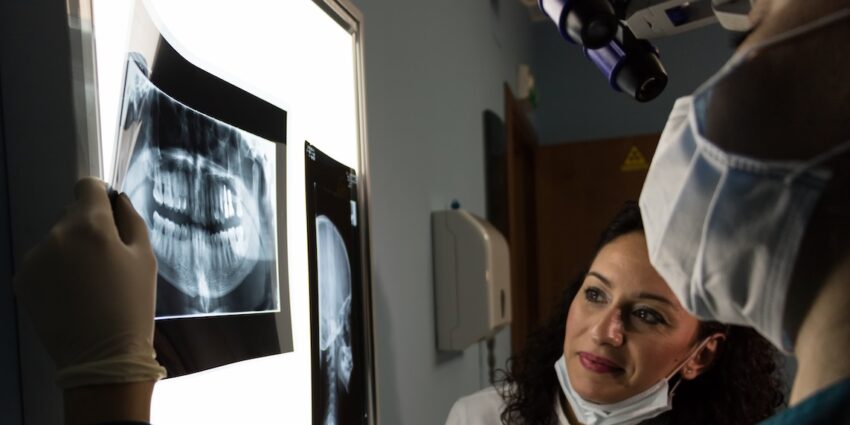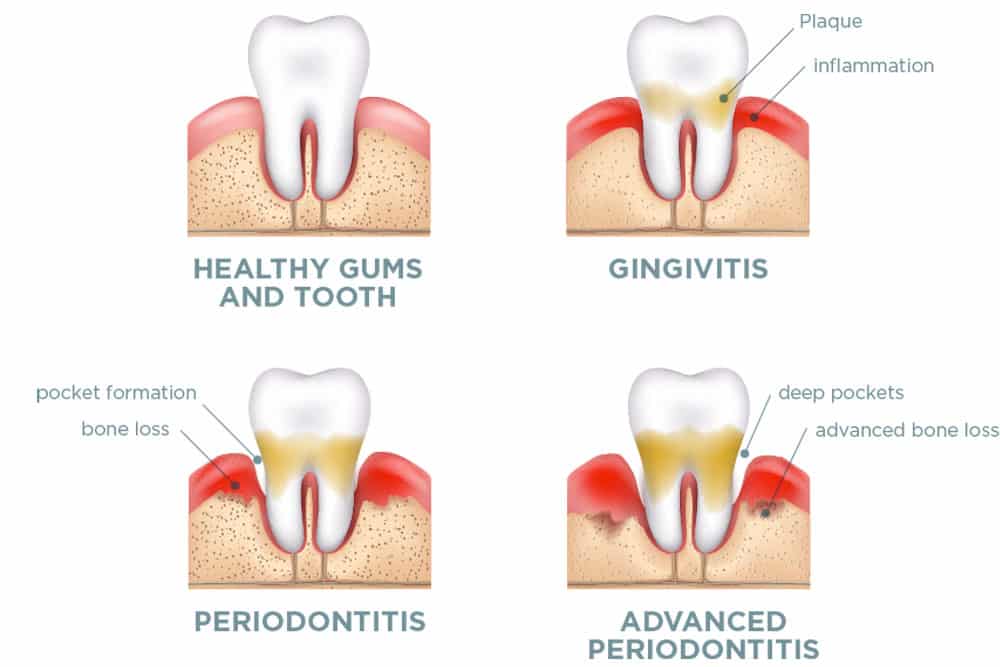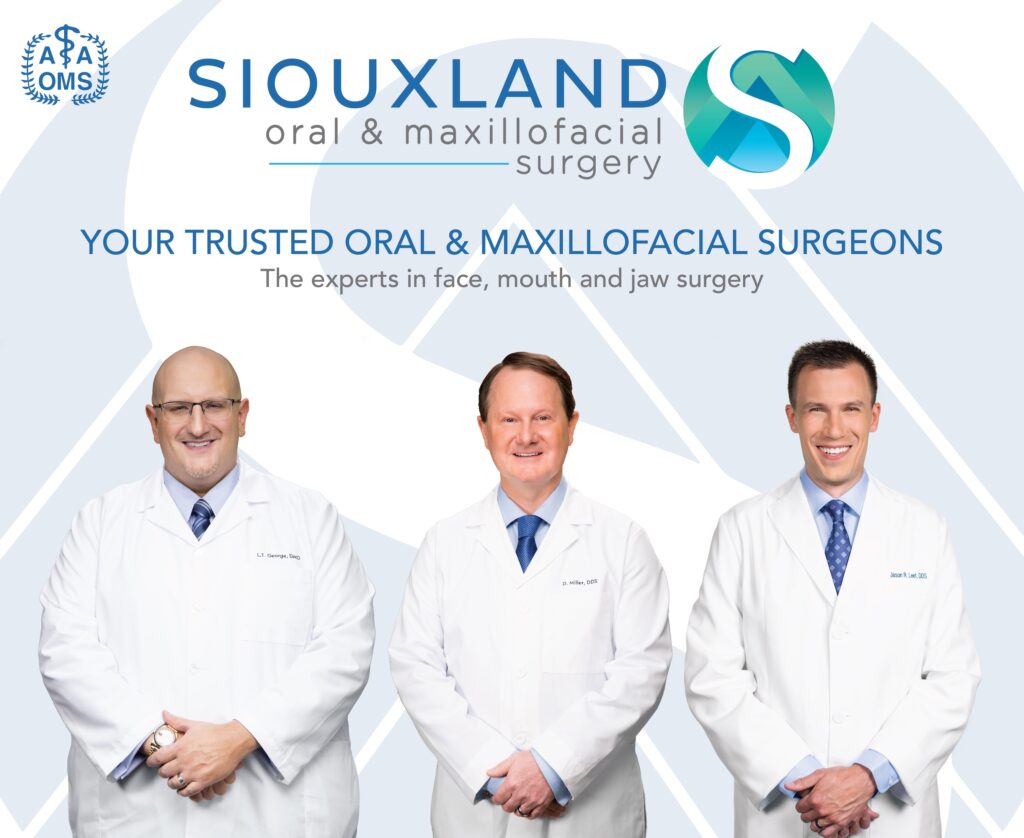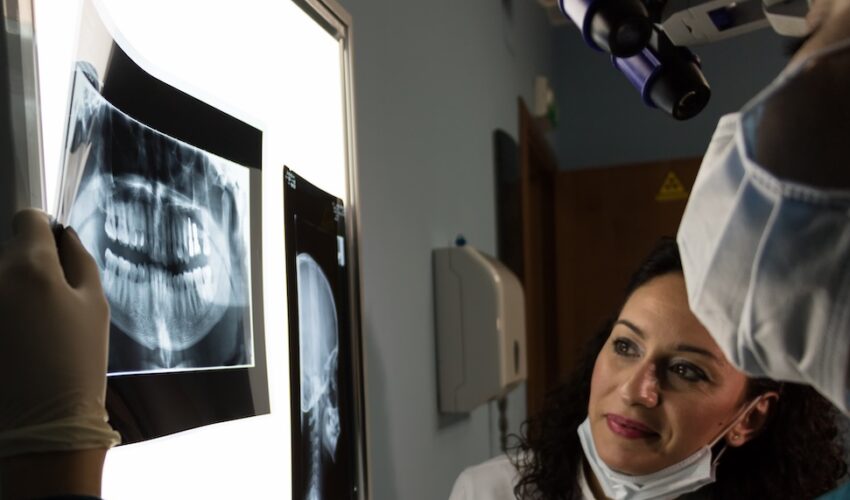Before dental implant, other procedures might be needed to prep for success
This paid piece is sponsored by Siouxland Oral & Maxillofacial Surgery.
We are back to talking about dental implants again, but this time let’s focus on some of the supporting surgeries that need to be done before having an implant placed. Some cases are just perfect: plenty of bone, the proper amount of space and a good amount of what we call attached gingiva. Many cases however, are not perfect and, therefore, need a little help to get them where they need to be.
One of the most important things to manage is the amount of bone you have in order to have a successful dental implant placement with longevity. There are many ways that people can lose bone, but they may not even realize it. Bone loss can be caused by periodontal, or gum, disease or even trauma and other types of tooth infections. Many other people lose bone because of the inflammatory effects of infection around carious or fractured teeth. This can be vertical bone loss or loss toward the buccal, or cheek, side of the tooth.
This buccal plate, as we call it, is critical in establishing proper placement of the dental implant. If it is not present, it makes the job of placing the implant more difficult. Sometimes, the extraction of a tooth can break the buccal bone completely; this happens more often for multi-rooted teeth. So almost always we section multi-rooted teeth, such as your molars and premolars, into multiple pieces so there is less risk of a buccal bone plate fracture.
For example, let’s say you have a tooth extracted, and everything went well. More and more often, we are able to place an implant at the same time as the tooth extraction, with the idea here being that the dental implant will occupy the majority of the extraction site and anchor a few millimeters past the extraction site into fresh bone. However, this is not always possible because you could end up in the maxillary sinus or encounter a nerve that supplies sensation to the lower lip. In those instances, it’s better to wait for the body to regenerate the bone and the gingival tissue in that given area. Then, the patient can return four to six months later to place the implant.
Some extraction sites need bone grafting to help preserve the architecture or form of the bone where the implant will go. Not every site, however, needs a bone graft. There are times even that the implant will need to be placed a little lower in the extraction site that still has good cortical walls. Before agreeing to a bone graft, you need to know and understand the reasoning and anatomy behind it.
Many times, when you place immediate implants right after a tooth extraction, there is a gap between the implant and the walls of the extraction site. If the gap is more than 1 millimeter, you certainly will need a bone graft to act as a road map for the body to know to build bone in the area and stick to the implant.
So you might be asking how to decide when is the right time to come back if you don’t get an immediate implant. Generally, it’s six months, but ideally, you would come back and have a CT scan performed to see if the outer shell of the bone, called the cortical bone, has indeed reformed. If it has, then the area is ready for the implant.
When you place an immediate implant to replace a posterior tooth, you sometimes do have to make small comprises in immolate position and angle to get the implant to be truly stable. With custom connecting parts for the crown to be placed later, this will make very little difference to how the new “tooth” looks and feels. Nevertheless, on the X-rays there will be some criticisms on position and angles. Waiting for the site to heal completely is the ideal option; however, for a variety of reasons, many people still want immediate implants.
For single-rooted teeth in the front of the mouth, immediate implants are a more straightforward process with a better chance of proper angles and positions. An advantage of immediate implant placement for anterior teeth is that they tend to preserve the buccal bone and soft tissue architecture for better cosmetics.
Newer implants with different placement drills, thread designs and connections allow for more bony integration than previous designs. The newest implant shows a connection of up to 50 percent with the bone versus the previous design weighing in at only 30 percent. This creates better force distribution along the length of the implant and not concentrating forces at the neck of the implant as it exits the bone. Furthermore, the new tri-oval prosthetic tooth connection allows for more buccal bone thickness and stability.
These are just some of the things we think about and can talk about when we have a consultation or discussion before tooth extractions regarding immediate implants. Couple this with our previous articles on the different implant materials such as ceramic implants, and you see that you have many choices to ask your oral surgeon about. There are more and more people attempting to place implants, so as you choose where to have your procedures done, make sure they have all the tools and knowledge to offer all the different options that are available.
Thank you for reading! See you next month, friends.











